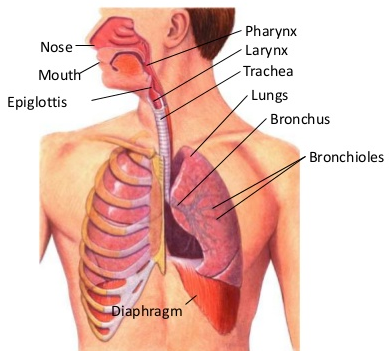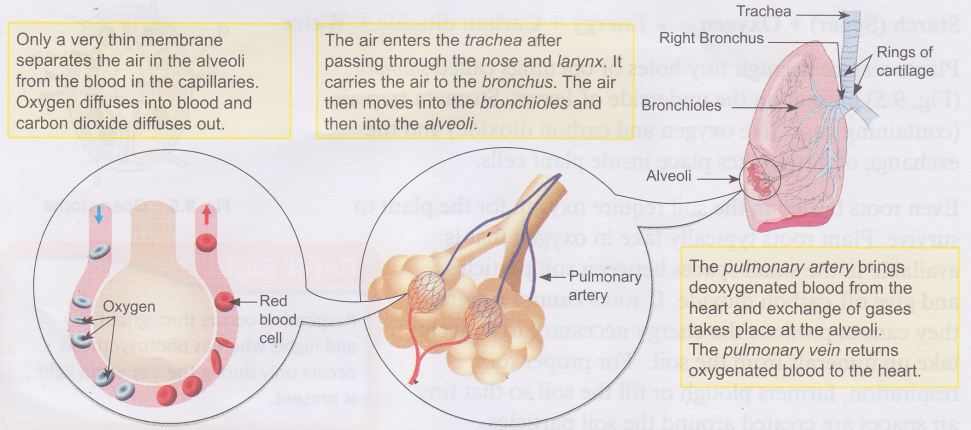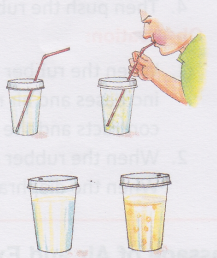How does the Air Travel Through the Respiratory System
Respiratory system in humans
Humans, like many other land animals with backbones, breathe in oxygen-rich air and breathe out carbon dioxide-rich air with the help of lungs. Lungs are present inside our chest (also called the thorax). They are protected by the rib cage. The ribs also support the lungs and help to pump air in and out when we breathe. Just beneath the lungs is a dome-shaped muscle called the diaphragm. When the diaphragm contracts, oxygen-rich air is pulled into the lungs. When the diaphragm relaxes, carbon dioxide-rich air is pumped out of the lungs.

Activity
Aim: To demonstrate how the diaphragm works during the process of breathing
Materials needed: A bell jar with a cork, straws, a rubber sheet, thread for tying, and a balloon
Method:
1. With the help of the thread, tie the rubber sheet to the bottom of the bell jar. This represents the diaphragm.
2. Now set up the arrangement with the straws and the balloon as shown in the figure such that the balloon depicts the lungs. Cork the bell jar.

3. Now pull the rubber sheet down. What happens to the balloon?
4. Then push the rubber sheet inside. Now observe what happens to the balloon.
Observation:
1. When the rubber sheet is pulled down, the balloon gets filled with air because the cavity increases and air rushes in. This is exactly what happens during inhalation. The diaphragm contracts and the air rushes into the lungs.
2. When the rubber sheet is pushed up, the balloon collapses again. This is similar to exhalation. When the diaphragm relaxes, the air rushes out of the lungs.
Passage of Air and Exchange of Gases
As we inhale, the air follows the route given in the box:
Air is exchanged in the alveoli. From here, the absorbed oxygen is picked up by the blood and transported to all parts of the body.

Carbon dioxide is picked up from all parts of the body and transported by the blood to the lungs. When we exhale, the carbon dioxide-rich air follows the reverse route, finally moving out through the nose.

The oxygen absorbed in the alveoli combines with haemoglobin in the blood, to form a compound called oxyhaemoglobin. Blood carries oxyhaemoglobin to all cells of the body. In the cells, oxyhaemoglobin releases the oxygen, which helps to break down food (glucose or sugar) to generate energy. Along with energy, carbon dioxide, water, and heat are also generated. The chemical reaction involved in this breakdown of sugar is:
Sugar + Oxygen → Energy + Carbon dioxide + Water
Activity
Aim: To show that exhaled air has more carbon dioxide Materials needed: Two disposable glasses with covers and a hole on top, two straws, and lime water.
Method:
1. Fill both the glasses with limewater.
2. Put straws in both the glasses. Let air enter one of them through the straw.

3. In the second, blow out some air (exhaled air).
Observation: The limewater in glass one is only slightly milky, while in glass two it is very milky.
Conclusion: Carbon dioxide has the property of turning limewater milky. From the observation, it is true that the exhaled air has more carbon dioxide.
